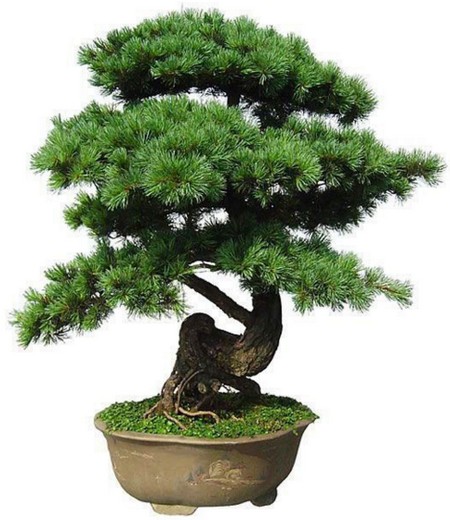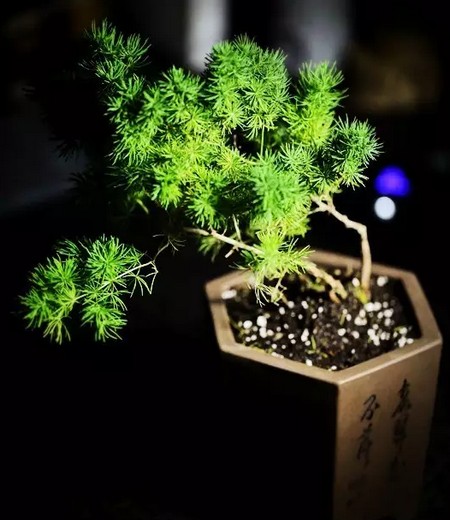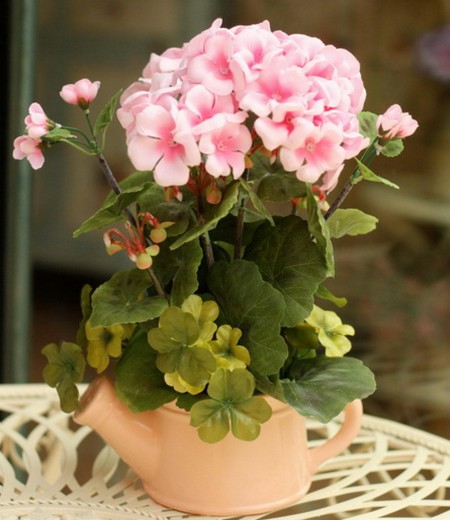How to raise Penglai pine? Culture method of Penglai pine
Penglai pine, also known as pine bamboo grass, the plant is very beautiful, dense leaves, spherical shape, beautiful leaves, green and elegant. Its leaves are thick green and dense, it is the most popular flower arrangement foil material, and many homes like to plant this plant, so how to keep Penglai pine? What are the breeding methods of Penglai pine? Next, the gardener will share it with you.

Penglai Penglai regular plant shape, upright branches, leaves are spherical clusters and soft, very appreciative value, so deeply loved by people, in the home layout of green plants on the choice of Penglai pine, so Penglai breeding environment needs to pay attention to.
Commonly used for sowing and ramet propagation:
Sowing and propagation: the life of the seed is short, and it will be sown immediately after seed collection. The seed is large, the seed coat is hard, soak the seed in clean water for 1 day before sowing, sow it indoors in April, the soil cover should not be deep, and keep 20-25 degrees Celsius at room temperature. Sprouted 15-20 days after sowing. The height of the seedling is 5 cm and can be transplanted.
Split-plant propagation: Penglai pine is used for multi-plant propagation. When ramet, change the pot in spring, hold out the mother plant, open the plant cluster, and plant separately. Cut stem bark and root system as little as possible. It can be carried out in spring and summer when changing the basin, the old plants with dense growth are removed from the basin, the underground roots are divided into several clumps, so that each clump contains 3-5 branches (pay attention to less root damage), and each clump is re-planted in the basin with newly cultivated soil, watered through, and placed in a semi-shady place to restore growth.
Culture methods of Penglai pine:
1. Soil: Penglai pine can adapt to many kinds of soil, but it is not resistant to salt and alkali. Deep, moist, loose and slightly acidic sandy loam is better, and mature pastoral soil, rotten leaf soil and appropriate amount of sandy soil are best used in potted plants.
2. Sunshine: Penglai pine likes a warm and humid environment, but is afraid of strong light. In summer, we should pay attention to proper shading to prevent sunlight exposure, so as to avoid burns or yellowing of branches and leaves, while cold and cloudy winter requires sufficient sunshine.
3. Temperature: the optimum temperature for the growth of Penglai pine is 20Mel 30 ℃, and the overwintering temperature is 3 ℃. The growth will stop when the high temperature is more than 35 ℃ in summer, and the leaves turn yellow, but the cold resistance of Penglai pine is strong, and the winter temperature is not lower than 5 ℃.
4. Moisture: spring and summer is the peak growing season of Penglai pine, which needs sufficient water, but it is not suitable to let the basin soil accumulate water to avoid root rot; after the end of autumn, the amount of water should be gradually reduced to keep the basin soil slightly wet.
5. Fertilizer: Penglai pine is the growing period in spring and summer. In order to make the branches and leaves grow luxuriantly, we should pay attention to supplement nutrients and fertilize every half a month, mainly nitrogen and potassium.
6. Diseases and insect pests: Penglai pine has fewer diseases and insect pests, but it can also cause harm to leaf blight. 1000 times of carbendazim wettable powder can be sprayed with 50% carbendazim wettable powder. If there are whiteflies and shell insects, it can be sprayed with 1000 times of oxidized Dongguo milk.
Time: 2019-06-01 Click:
- Prev

Culture methods and matters needing attention of Penglai pine
Penglai pine is native to Natal, South Africa, Penglai pine plant erect, 3060 cm high, is a perennial shrubby herb of Liliaceae. The cultivation and management of Penglai pine is relatively simple. It is generally fertilized every half a month in spring and summer, mainly nitrogen and potassium, and usually pay attention to the basin soil not to accumulate water.
- Next

Culture methods and matters needing attention of hydrangea (geranium)
Geranium is a famous ornamental plant for leaf and flower. The leaves of geraniums are usually alternate, palmately lobed or pinnatifid, generally with long petioles, some species have deep and shallow lines on the leaves, each flower has five petals, and the flowers gather into umbellates, called pseudo-umbels.
Related
- Fuxing push coffee new agricultural production and marketing class: lack of small-scale processing plants
- Jujube rice field leisure farm deep ploughing Yilan for five years to create a space for organic food and play
- Nongyu Farm-A trial of organic papaya for brave women with advanced technology
- Four points for attention in the prevention and control of diseases and insect pests of edible fungi
- How to add nutrient solution to Edible Fungi
- Is there any good way to control edible fungus mites?
- Open Inoculation Technology of Edible Fungi
- Is there any clever way to use fertilizer for edible fungus in winter?
- What agents are used to kill the pathogens of edible fungi in the mushroom shed?
- Rapid drying of Edible Fungi

